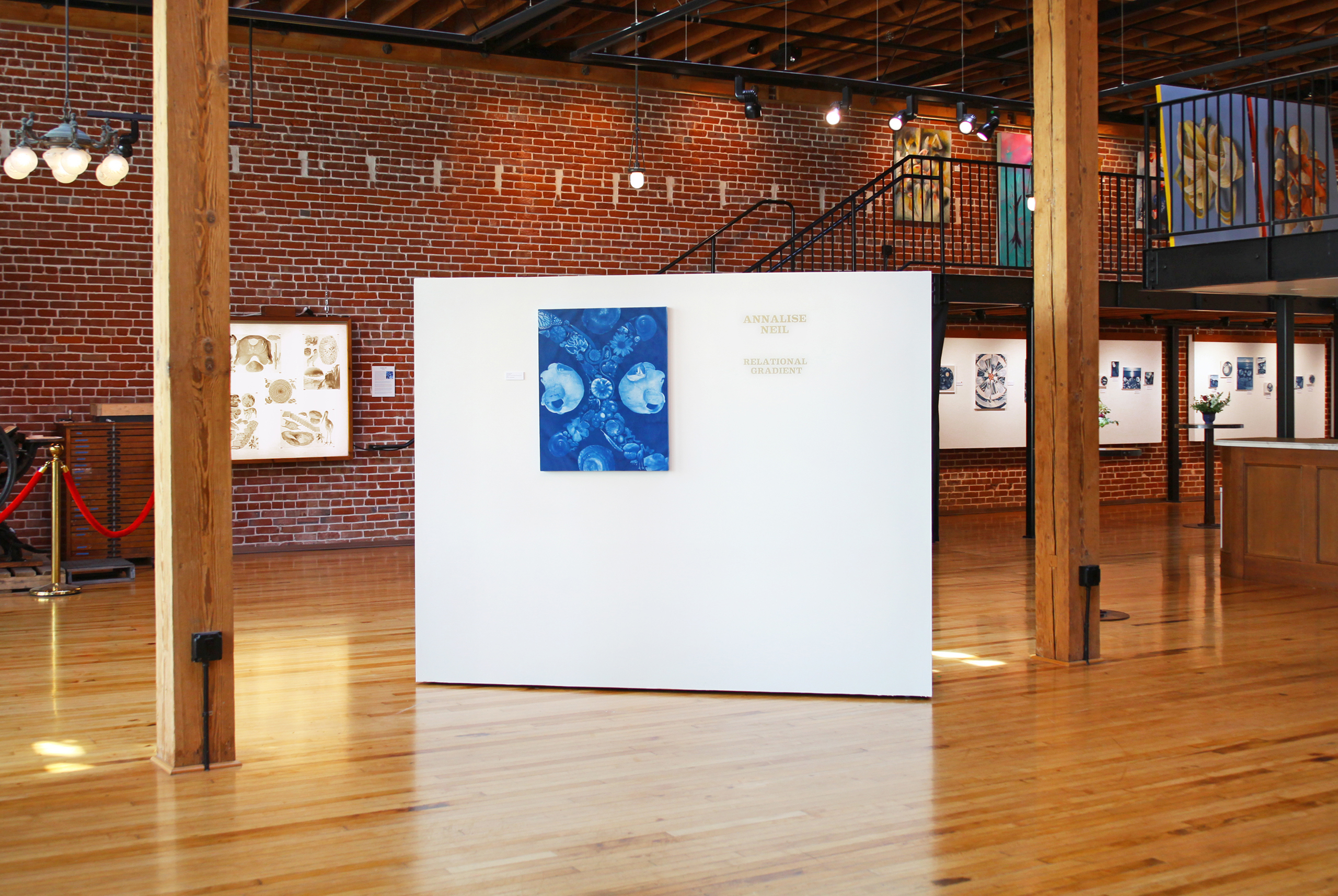Q&A With Annalise Neil
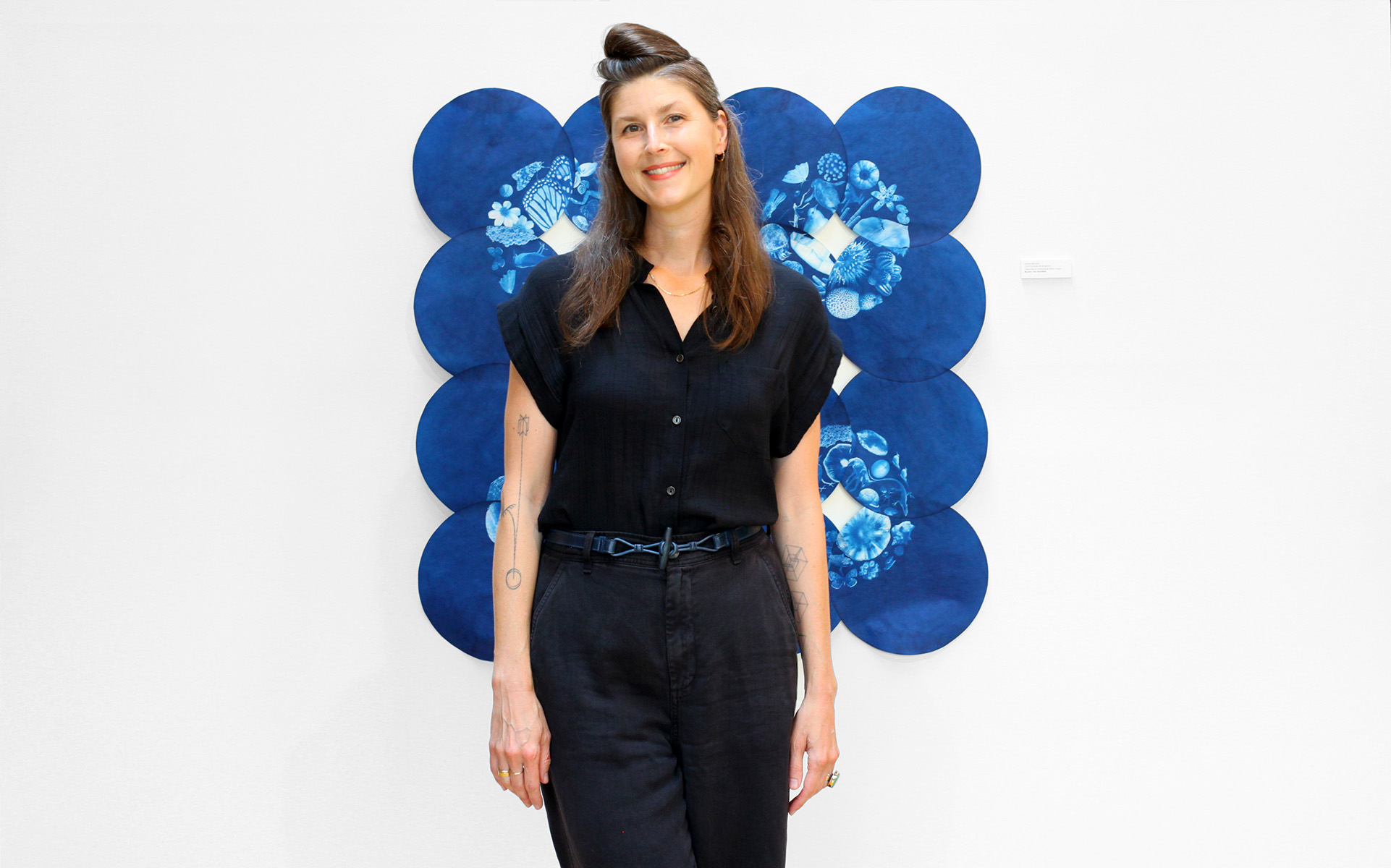
In her solo show “Relational Gradient” at Sparks Gallery, Annalise Neil unites art, nature, and science with radiant blue cyanotypes and complex watercolors. The artist’s covered topics range from both recognizable subjects such as plants and animals, to abstract and philosophical topics like quantum theory, perception, and time. The artworks are also left open to the interpretation of the audience, who are encouraged not only to reflect on what connects the pieces together, but how we as humans connect to the natural world around us. Below, Neil provides additional context to her art practice and discusses what drives her creative process.
Sparks: Cyanotypes are the hallmark of your current style (besides watercolor). How did such a unique medium become a significant part of your art practice?
Neil: I first tried cyanotype in January 2020 at the suggestion of a photographer friend. I immediately became entranced with every element of the medium, and leaped with both feet into experimentation. The timing was excellent, as I was able to devote lots of time to this process during the pandemic in my backyard. My BFA is in Printmaking, and during those years I integrated photography and drawing, especially through lithography.
At a certain point in my cyanotype journey, I realized the way I was playing with it had overtones to the work I was doing years earlier in college. This was why the syntax of photographs layered with hand-applied elements felt so familiar. As I have progressed enthusiastically with cyanotype, I continue to be mesmerized by the alchemical possibilities the medium affords. Shifting the tones of blue through bleaching, toning, using various papers, collage, and pushing scale and shape keep me curious and compelled to make work in new ways. Photographing items to use in the work is similar to a treasure hunt through nature, and as an avid outdoors enthusiast this part of the process aligns with my passion for wild spaces.
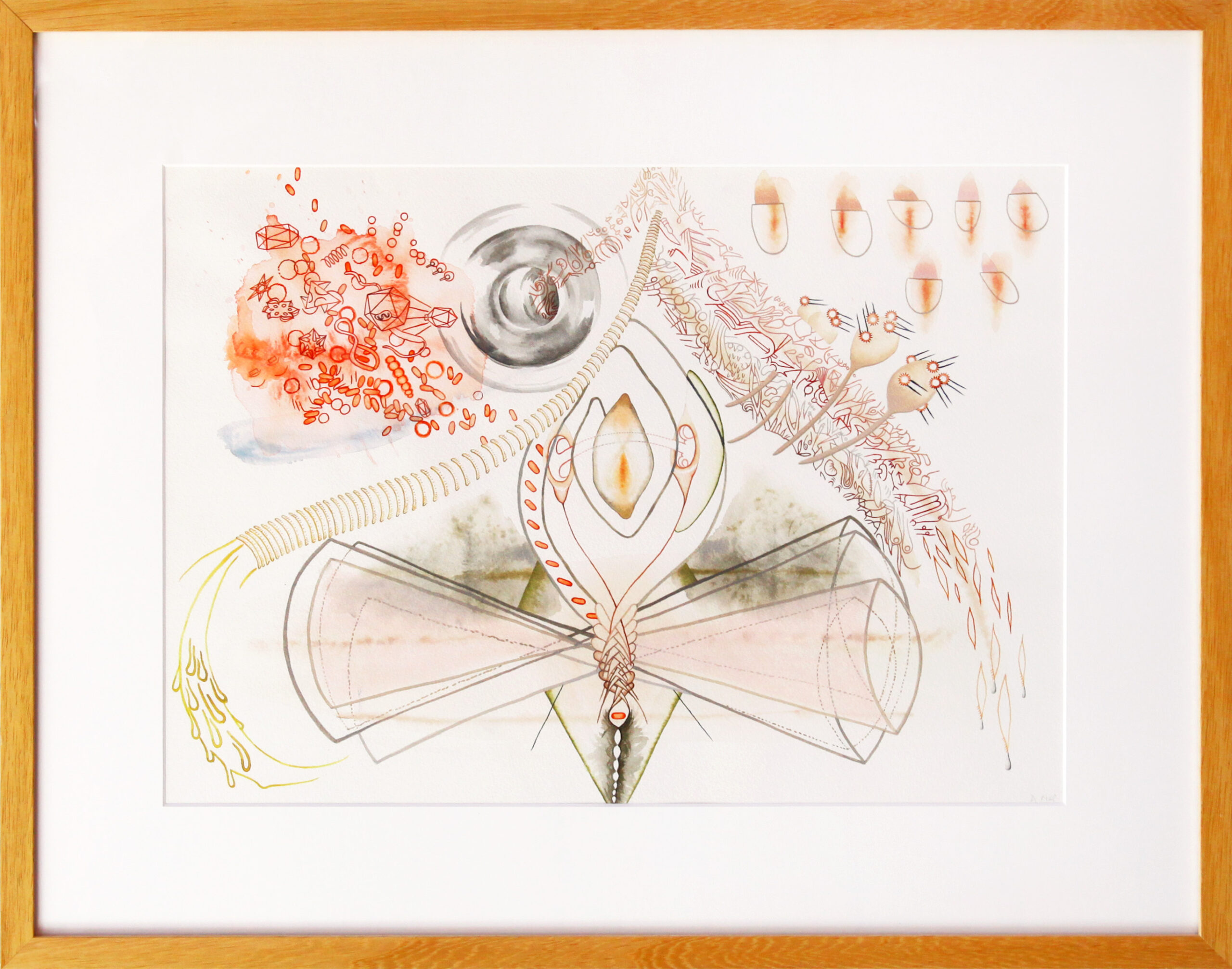
Sparks: The concepts behind your show Relational Gradient come from many different fields of academic research, ranging from quantum theory to biology. Has your artwork always been strongly inspired by fields of study or is this a more recent development?
Neil: I was raised in a fairly artistic home, where nature and creativity were prioritized. It wasn’t until I went to college that I realized that I have a kinship and love for science and math. As soon as I began to study the sciences more rigorously, the concepts I encountered made their way into my work. Made during art school, my first serious body of work was an Intaglio series that depicted birds as metaphors for the molecular building blocks of proteins. I have continued to incorporate science especially into the work I make, in response to my voracious reading of research and concepts as they emerge into the public realm.
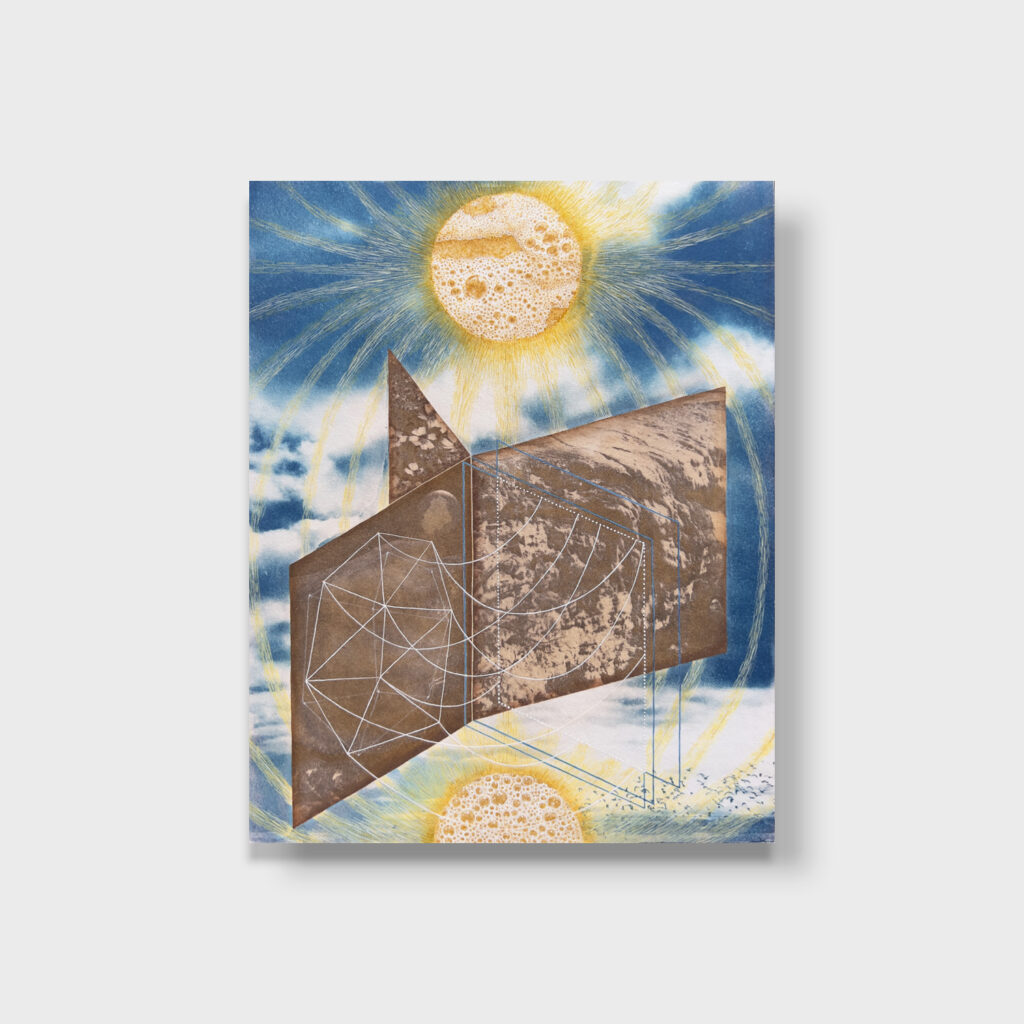
Sparks: Do you have a technique or a ritual for getting into a creative state of mind for making your art? Do you listen to music, have tea or coffee on hand, do exercises, etc.
Neil: As I read or listen to audiobooks or podcasts, I take notes on key ideas in my sketchbook. The topics I spend time with range from ecology to physics to meditation, among others. What I love to find are cross-over ideas from one universe of thought to another.
When I am ready to start a new piece, I read over my notes. I will generally notice a handful of concepts that weave together in a way I find enlightening and compelling. From there, I translate the ideas into visual metaphors as sketches. I will make a number of basic forms that I am interested in spending time with, and extrapolate their complexity from there.
Another aspect of getting into a creative mindset is the medium itself. For me, cyanotype is a never-ending sandbox of possibility and exploration. The excitement I feel for trying out a new bit of chemistry or paper-twiddling also fuels my engagement with my practice.
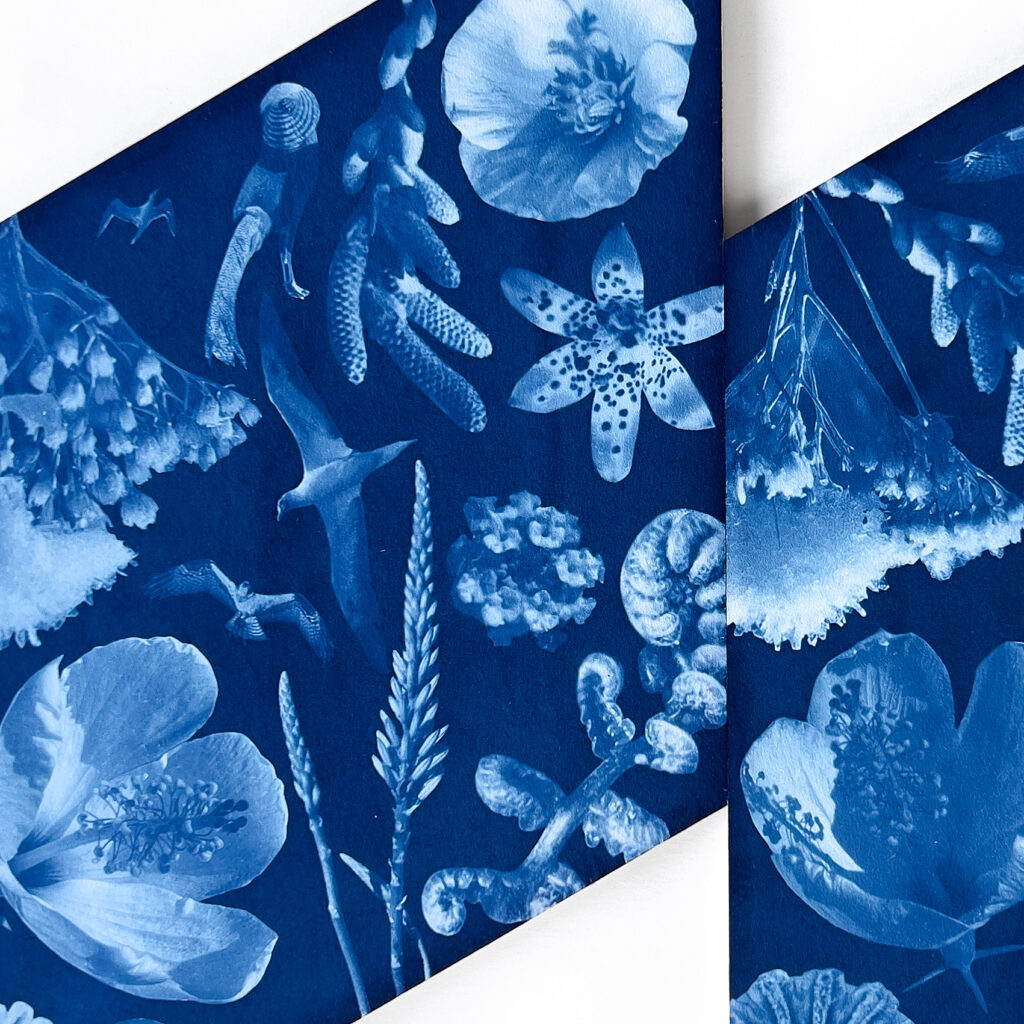
Sparks: What is the most important advice you would want to share with young, aspiring artists?
Neil: I feel that the arts and creative expression are a foundational aspect to the human experience. I encourage every person to find some way to be engaged and observant about the world around them, and to make inquiries in a generative way. I believe that curiosity propels evolution, and thinking and exploring are gratifying individually and as a community. If the interest is coming from a genuine place of wonder, that will come through in the work.
I think having a real passion for the medium or topic is the most important first step to being an artist. The more one reads, travels, and experiences, the richer the work they produce will be. In an ideal world, the making and enjoying of many types of art would be a shared and robustly appreciated practice that the majority of people would be part of.
